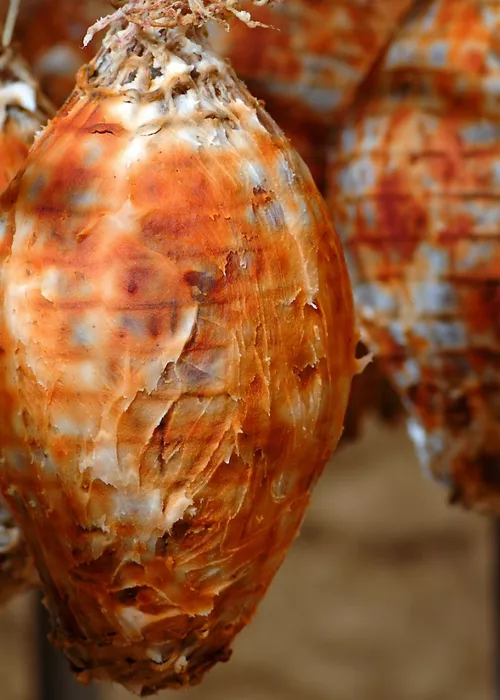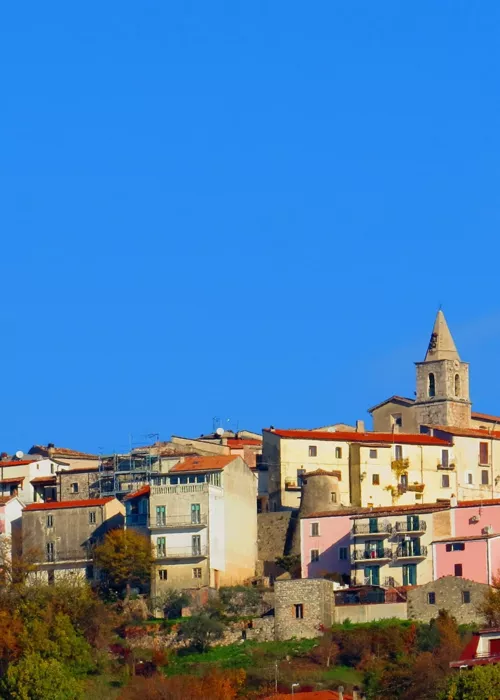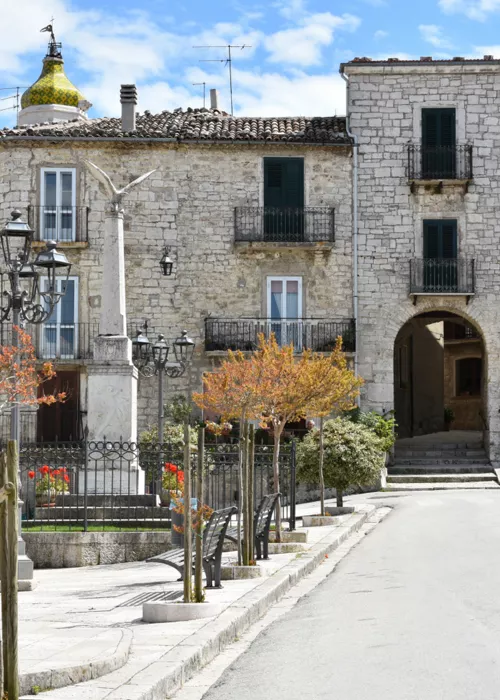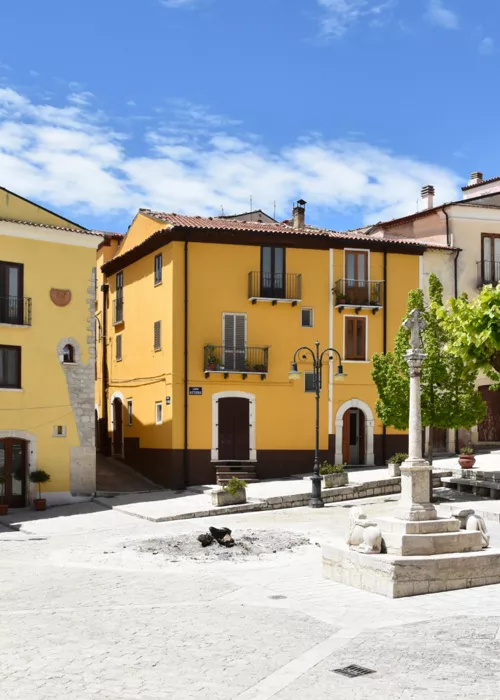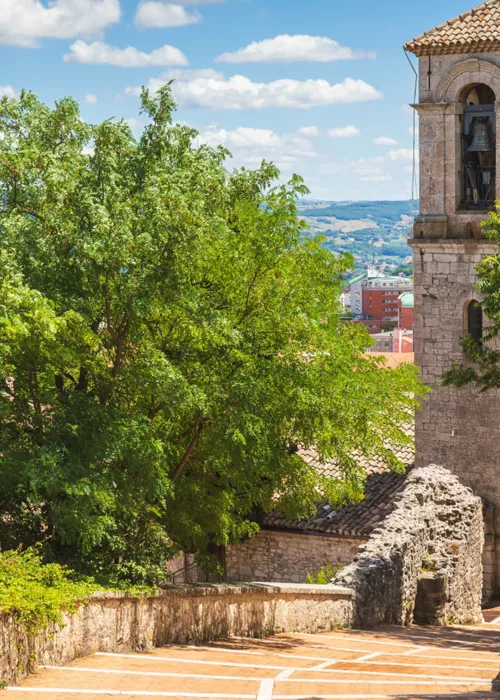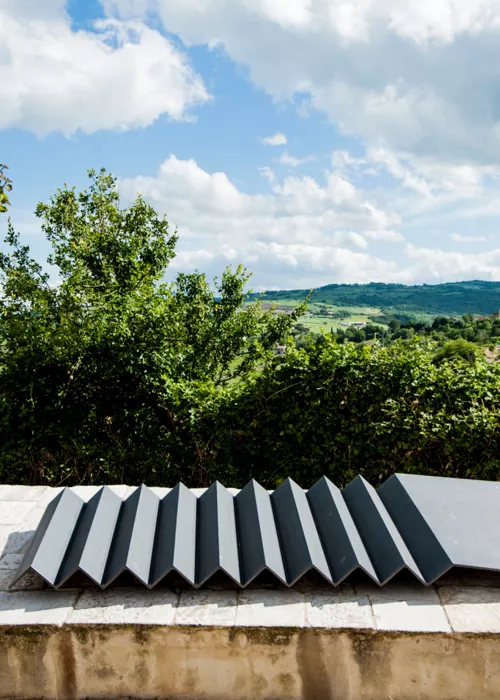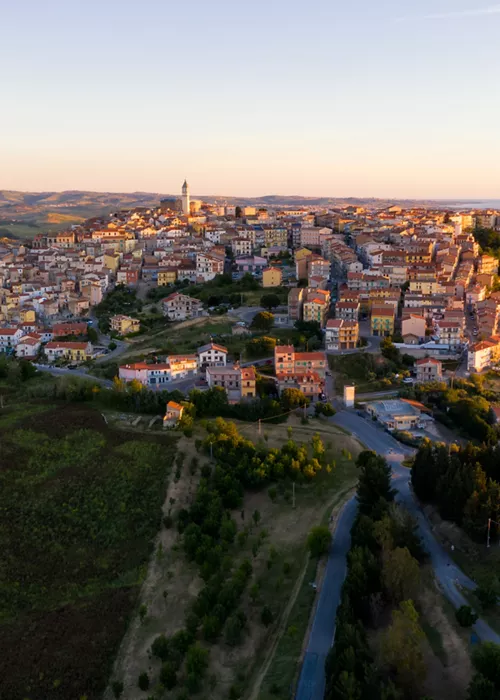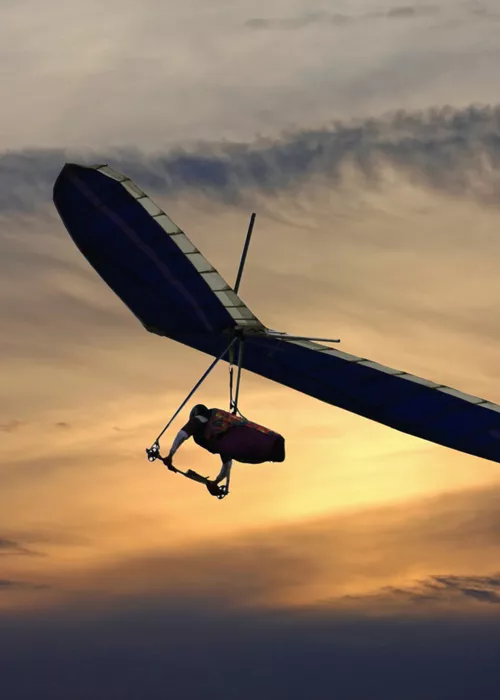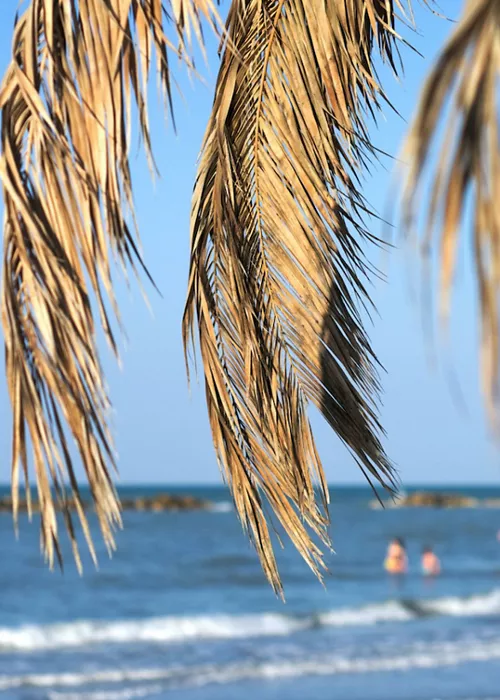Visiting the Village of Trivento in Central Molise - where beauty is found in the details
8 minutes

Trivento is the kind of village where time stands still. This town of 4000 inhabitants is located in the mountains of Molise, a place where the only sign of time passing by is the sound of church bells.
I slowly climb the two hundred stone steps of the San Nicola stairs to get to the historic center of Trivento. The October sun warms my skin, I stop every few steps to take a picture of the view, of a beautiful façade, or of the small sixteenth century Church of San Nicola in the middle of the stairs. Every now and then, a nonna shuffles past, curved over her cane, holding a shopping bag in her other hand. With her curious gaze, she watches the blond stranger who comes to discover Trivento with a camera on a Tuesday morning in October.
Trivento, where slow life meets street art

Trivento is the kind of village where time stands still. This town of 4000 inhabitants is located in the mountains of Molise, a place where the only sign of time passing by is the sound of church bells.
I slowly climb the two hundred stone steps of the San Nicola stairs to get to the historic center of Trivento. The October sun warms my skin, I stop every few steps to take a picture of the view, of a beautiful façade, or of the small sixteenth century Church of San Nicola in the middle of the stairs. Every now and then, a nonna shuffles past, curved over her cane, holding a shopping bag in her other hand. With her curious gaze, she watches the blond stranger who comes to discover Trivento with a camera on a Tuesday morning in October.
Trivento is bursting with viewpoints, thanks to its location on a mountain ridge on the border between Abruzzo and Molise. Depending on which side you turn to, you can either see the Adriatic Sea on one side, and Abruzzo on the other. One of Trivento's best viewpoints is Balcone di Largo Porta Maggiore, where you’ll find a crochet Christmas tree. The brightly coloured crochet artwork is part of a Yarn Bombing Festival: if you look closely you will find cheerful crochet work everywhere, on fences, in trees and near houses. It’s no wonder Trivento calls itself “the World Capital of Crochet Street Art”.
Trivento is a place bursting with things to see if you have time to focus on the details. It may not have as many dramatic palazzos, but unique details share the proud history of the region. A casual stroll, turning left and right as you please, is the best way to see the village. It's hard to get lost because of its layout, you always get back on the main roads.
And so I just follow my gut feeling and stroll through the quiet streets. Although it is still early in the fall season, the air smells of burning wood. I walk in the direction of the cathedral, and suddenly hear cheerful children singing. Moments later, a group of nuns with singing toddlers comes around the corner. Holding hands, dressed in brightly coloured winter coats, the children sing songs I can't understand, and wave happily at me as they pass. I smile, where else do you find scenes like this? It’s like a movie scene, just for me. When they're gone, I'm alone again. And the only sound I can hear is the sound of the soles of my boots on the paving stones as I wander on, the sound bouncing off the walls of ancient houses. Laundry is softly swaying in the wind above my head.
Trivento is centuries old; the first people to live there were the Samnites, who settled as early as 1000 BC. Roman history is literally tangible here. Throughout the town I see Roman tiles with inscriptions. I read the sign explaining the inscription when a man wearing a black cap approaches me. “Where are you from?” he asks in English. It's rare to come across someone who speaks English here, so I decide to answer. “The Netherlands”, I answer.
He asks some polite questions before saying that he works as a tour guide, and if he can show me some places. I doubt for a moment. Normally I would never follow a strange man in a place I don't know, but I decide to lean into the village feeling. To trust a stranger. I say “okay”. He walks me to the belvedere, the viewpoint.
His name is Nicola, or Nico. “Like the drummer of the band Iron Maiden,” he explains. “My favourite band”. He has lived in Trivento all his life. He thinks it is a nice place to live. Not too quiet for a young man like him? “Quiet is good'”, he says while looking out over the mountain range. The only thing he doesn't like is that people are not as open minded as he would like. “I like heavy metal music, and they don't so much”. With his tattoos and rock t-shirt, he does indeed seem to stand out from the crowd.
He sometimes works as a tour guide, his great passion, he says. And in his spare time, he works as a volunteer for the civil guard. Every now and then he uses Google Translate to tell me more about the places we visit. The rest of the time we use a mix of English, Italian and hand gestures. He takes me to the perfectly preserved crypt of the Romanesque Cathedral dedicated to Santi Nazario, Celso e Vittore. The colourful ceiling frescoes are beautiful to see.
When he sees me taking pictures of a cat lazing in the sunshine under the wine ranks, he starts pointing out cats to me, and keeps doing so excitedly for the rest of the tour. He seems delighted we get to bond over something that doesn't require language to understand. I don't have the heart to tell him I prefer dogs. When Nico goes inside his house to grab me a map of the local area, I secretly pet a dog that walks by.
On our walk Nico points to a few old buildings, some with letters above the door, others without. “There was a leather factory here,” he says. “And a cinema here.” Everything, he says, has been closed for about seventy years. It is a glimpse into the vibrant past of Trivento, in a place that is now very quiet.
A little further on, we slip through a narrow street (only 34 centimeters wide), on the way to the fig trees. Nico says that it is one of the narrowest streets in Molise, a claim I would later hear in more places. It is never clear to me which village really wins this honour, but I smile politely. I take a fig that Nico picks from the tree. I eat it in silence, looking out over the valley. A little further on is the dilapidated castle. On Google it is marked as “temporarily closed”, but given that it is privately owned, it is not always open. Too bad because it would give the village an extra attraction.
Every village in Italy has its own traditional sweet. And that is exactly where two cornerstones of the Italian identity come together: food and traditions. “Want to taste the local Trivento biscuit?”, Nico asks me. I don’t hesitate to say yes. And so we stroll down the road, to the modern part of Trivento. We walk into a shop with a counter that spans the entire length of the building. On the top shelf of the display case lay the powdered sugar-coated cookies: Ceppelati.
We order two and sit down with a cup of coffee. The cookies are made from shortbread and lard. Nico uses his translation app: “so that people with a milk allergy can also eat them”. The filling is made from black cherries from the region. A fine balance of a sweet biscuit with a sour filling. The crescent shape of the cookie is an ode to the headdress of goddess Diana, to whom the crypt in the cathedral is dedicated.
On the way back from our cookie excursion, Nico says hello to pretty much everyone we meet on the street. We walk on the main street, he explains. Trivento has only four bars, a pub, three butchers and two pharmacies. “There are 4280 people living here, so you know most of them.”
We walk along a square. “In the summer, it's deserted here until five in the afternoon,” he says, as if the square is bustling with people now. I count three people from the garden service. “After that people come out for an aperitivo”. I can just imagine it. From the square you have a beautiful view of the old town. The perfect place to spend a slow afternoon enjoying the relaxed lifestyle of the Italian villages.
Top 5 things not to miss
- Cattedrale dei Santi Nazario, Celso e Vittore: Right in the historical city centre, you’ll find the cathedral. It was built on the site of a Roman pagan temple. The current building dates to the 11th century and has a beautiful crypt.
- Historic City Center: Perched on a hilltop the historical city centre is a maze of narrow streets, cute squares, pretty viewpoints, and historical sights. Worth a stroll and see what you discover.
- Belvedere: Because of its hilltop location, you’ll find amazing viewpoints around the old city centre. On one side you can see Abruzzo, and the other side the Adriatic Sea.
- Street art: In stark contrast with the old buildings, you’ll find some fresh pieces of street art from Italian artists. Especially be on the lookout for the crochet street art, you’ll find it everywhere and it brightens up the town.
- Ceppelati: Every town in Italy has its own cookie, so you don’t want to miss tasting Trivento’s version. Perfect with a morning espresso. You’ll find them in most bakeries.
Useful information
Best time to go: The best time to go is in the shoulder seasons, when the weather is nice, but there are very few tourists. August is best avoided for this reason.
How to get there: The best way to get to Trivento is by car. The closest bigger city is Campobasso, which is just over half an hour away. This also offers you the opportunity to visit nearby towns. It’s also possible to take a one hour bus from Termoli.
Article written about the experience of Milou van Roon – Explorista.nl



